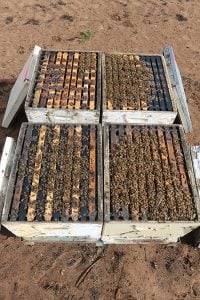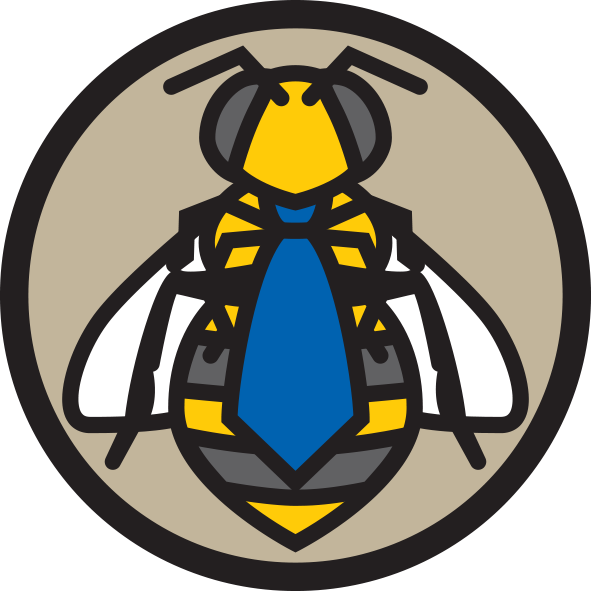Hive management in autumn is critical to ensuring your hives survive winter. Disease and colony management is best performed in autumn rather than in winter.
Perform a pre-winter inspection in late April or early May on a warm sunny day:
- Ensure that all colonies have a laying queen
- Colonies without a queen or with a weak queen should either be requeened or combined with another colony; it is better to have fewer, strong colonies that have a greater chance to survive winter, and will build up faster in spring
- Colonies with less than 6 frames of bees should be culled or combined. Temperature regulation is impossible without enough bees
- Hives should be condensed to one or two boxes to reduce the amount of energy required for them to keep warm
- Colonies need between 4-6 frames of honey to survive the winter period, and more than that in cooler areas of the country
- Monitor for pests and disease, and report any notifiable diseases. Any colonies with American foulbrood must legally be destroyed
- Repair hive boxes to prevent robbing
- Consider reducing the size of the entrance
- Record all undertakings as per the Biosecurity Code of Practice
Other measures:
- Place hives in sunny sheltered positions, preferably with a north-east aspect
- Raise hives 30-40 cm above the ground
- Check the weight of your colonies once a month to identify colonies at risk of starvation
- Supplementary feeding can be used to provide food when too much honey has been removed. This is best done in autumn rather than in winter, as winter feeding disturbance can increase diseases such as Nosema
- Repair and replace damaged equipment ready for spring

Image: Honey bees cluster together to keep warm through the winter. They use their honey stores to provide energy to generate heat by vibrating their flight muscles. Between 7-15°C, the hive population can be checked by looking at how many top bars of frames the clustering bees cover.
The hive in the back left is nearly dead, shown by its very small population going into winter, and is too weak for remedial action in autumn.
Acknowledgements
D. Somerville (2010) Wintering Bees. Prime Fact 998, New South Wales Department of Industry and Investment
About the author Nadine Chapman

